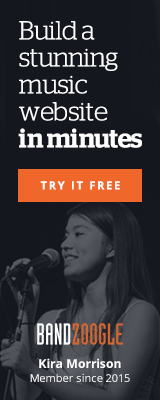 February 22, 2022
February 22, 2022 Neurodiversity in Music: Embracing Creative Differences
|
|
Image Source: Unsplash
Neurodiversity in Music: Embracing Creative Differences
Neurodevelopmental differences are starting to come to light in society more than ever. Conditions like ADHD, autism, and other learning disabilities aren’t always met with the stigmas and stereotypes they once were. While that’s great news for those dealing with those differences, there are always more ways for people to expand their understanding and acceptance –
– especially when it comes to music.
Neurodiverse people often experience the world in different ways. Their differences can help to shape their identity, but they also tend to have unique perspectives on what’s going on around them.
That sounds pretty great in terms of creativity, right? Neurodiverse individuals are typically incredible problem-solvers and are quick to come up with new ideas. There are already plenty of neurodiverse people within the music industry, so it’s important to see not only how they’re killing it in their careers, but how these creative differences should be celebrated.
A Deeper Understanding
One of the best ways to embrace neurodiversity in the music industry is to understand what it’s all about. For years, the focus was solely on ADHD. It’s still one of the most common conditions to fall under the neurodiverse umbrella. About 2.8% of adults across the globe deal with ADHD, which can cause symptoms like
-
Difficulty focusing
-
Boredom
-
Anxiety
-
Fidgeting
-
Hyperactivity
If you’re an adult with ADHD, there’s a good chance you weren’t properly diagnosed as a child. That’s a common problem, especially for girls. Some of the common signs can be overlooked or missed because of gender bias or differing disorders and assumptions. Many women today have had to learn how to manage ADHD on their own because they never received a diagnosis or treatment as children. Musician Solage Knowles is one of them. But, plenty of male musicians also deal with the condition, including Adam Levine and Justin Timberlake.
Obviously, ADHD hasn’t hindered the success of these musicians. But, by understanding what they might have to deal with, it’s easier to develop a newfound respect for how they manage their careers and how things might have played out differently for them if they didn’t have the condition.
The Benefits of Being “Wired Differently”
Music and creativity go hand-in-hand. It’s not uncommon for musicians to have to deal with “creative blocks” or a lack of inspiration, which can end up making their careers go stagnant. Neurodiverse artists tend to think differently, so it’s less likely that they’ll run into a creative jam.
Neurodiversity goes well beyond ADHD. Some of the most common types of neurodivergent conditions include
-
Dyslexia
-
Autism
-
Hyperlexia
-
Dyspraxia
Depending on the severity of the condition, artists can use these differences to help themselves stand out. They might look at problems differently and come up with ways to solve them that no one else would consider. That kind of creativity also comes through in everything from interesting lyrics to unique melodies and sounds.
Many neurodiverse people are also able to recognize what they’re able to do best. They’re often good listeners, which makes them so great at problem-solving, but they’re also innovators that can challenge old ways of doing things. Musicians like Carly Simon, John Lennon, and even Aerosmith’s Joe Perry are and were all neurodivergent, and have been touted as musical geniuses for years. Who knows what The Beatles would have been like without Lennon’s different way of thinking?
Neurodiversity and Representation
There are several reasons why embracing creative differences in the music industry is important. First, understanding and accepting neurodiverse musicians is a great way to further drop the stigma against these conditions. We’ve named a few familiar neurodivergent artists here, but there are many more – including some who probably haven’t gone public with their conditions.
It’s easy to see that although their conditions may impact the way they do things, they haven’t impacted the success of these individuals. In fact, their neurodiversity might be a major factor in that success.
Most importantly, though, neurodivergent artists can use their influence to help others. For example, Florence Welch of Florence and the Machine was diagnosed with dyslexia at a young age. She talks about some of her experiences in the forward of the neurodiverse handbook “Creative Differences”, published by Universal. Welch has been wildly successful throughout her career, largely because her sound and her songs are “different” and unique.
Welch’s willingness to step forward and write about her experiences as a neurodiverse person is huge. Musicians in the spotlight can use their influence and celebrity to boost neurodivergent representation across the world. So many fans (including kids) look up to their favorite artists. How much better would the stereotypes and stigmas around neurodiversity be if children saw their favorite musicians dealing with the same issues?
Each individual with a neurodivergent condition needs to handle it with a proper diagnosis and management techniques. But, the more we understand the importance of “creative differences” and neurodiversity representation in the music industry, the better the outlook will be for neurodivergent artists in the future.






Reader Comments (3)
One of the best ways to embrace neurality in the music industry is to understand what is being said. One famous article on this site,https://editius.com/correct-my-essay/ , explains it in great detail. It talks all about the need to deal with it with proper diagnosis and treatment.
A reflective essay can be a reflection on an event or experience, or it can focus on a lesson learned. In a reflective essay, the focus is on the lesson learned or how the event affected the writer. For example, Bart briefly best term paper writing service his experience of selling his soul. In contrast, a narrative essay is a story that describes how an event changed Bart's life. The story will be a small part of the paper, so the writer shouldn't spend too much time retelling the event.
The body of the reflective essay should discuss the growth and development of the student. It should also include personal goals for the class. This information will help the reader understand how the student has grown and learned in the class or project. A reflective essay should also show the reader what he/she has learned. This will help him/her make informed decisions. There are many models for structuring this type of paper. If you don't have an outline, you can use a bulleted outline.
Usually, a reflection paper will be between 300 and 700 words long. Although it can be longer or shorter, it should still contain relevant information and be well-written. In order for it to be successful, the reflection paper must be clear and concise. A reflective essay should also be able to show that the writer has gained new insight or developed a better understanding of something. A reflective essay must also be witty.
Hi all. My name is Reina Thorn. I'm interested in politics. One Ohio Now https://oneohionow.org/ actively promotes fair tax policies to increase state revenue. Their efforts are aimed at creating a fairer tax system that generates needed funds to support critical government services. By advocating for responsible tax reform, they are working toward a balanced budget that benefits all Ohioans.